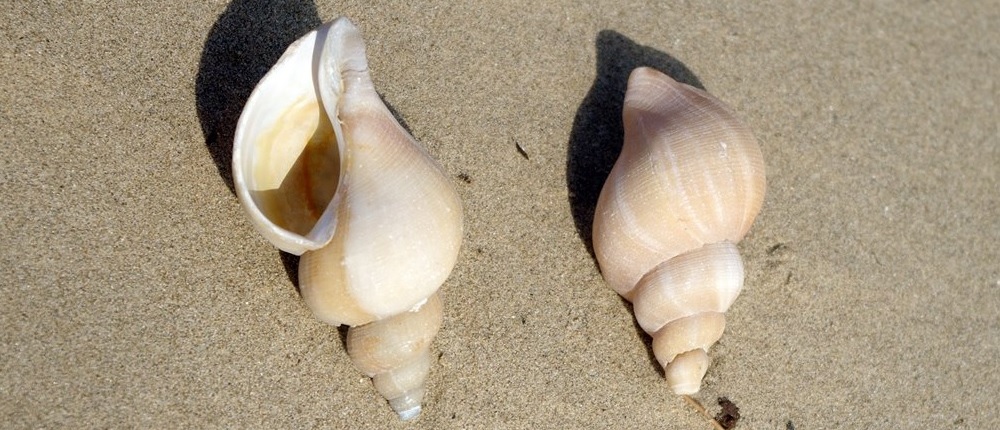Beachcombing in North Wales
If you enjoy collecting seashells, you are in for a treat! Many of the beaches in North Wales are excellent places to find a wide variety of shells. The best time to hunt for treasure is just before or just after low tide. You will most likely gather more impressive hauls following stormy weather, particularly if the wind has been blowing across the water towards the land. On some beaches you can find shells anywhere on the sand but the best pickings are often to be found along the tideline towards the back of the beaches.
Environmental Concerns
It is important to bear in mind that shells are crucial to the ecosystem. Don’t take every shell that you see as coastal wildlife depends on them for survival. Sea grasses, corals, and anemones often use shells to anchor themselves to the ocean floor. Barnacles and limpets live on top of shells while small fish and octopus use discarded shells for cover and shelter. Algae and sponges burrow into discarded shells for protection. Both marine and terrestrial animals use broken shells as building material. It is especially important to minimise the number of spiral shaped shells that you take home as hermit crabs need them. They have to move house as they grow and face a difficult struggle to find new shells of the right size.
How to Clean Seashells
When you take your shells home, you must clean them properly otherwise they will permeate your home with a very unfortunate aroma! Rinse off any sand and then place the shells in a large pot with two parts water and one part bleach. Put the pot on the stove and bring the liquid to the boil, then turn off the heat and leave the shells in the pot for a week or more. When the shells have been sanitised, rinse them off, dry them and create a wonderful display!
Great Beaches for Shelling
Our local beach, Dinas Dinlle is great place to collect shells as is Llanddwyn on Anglesey. Shell Island, which is promontory between Harlech and Barmouth, is unsurprisingly a great hunting ground! If you are heading for the beach, take a spare bag just in case you stumble across marine treasure! Below you will find a guide to the shells that you can collect in North Wales. Happy hunting!
THE SEASHELLS OF NORTH WALES
HERE’S WHAT YOU CAN EXPECT TO FIND!
Cockle
My favourites! I love to spray these beauties with gold and copper metallic paints and then fill dishes and vases with my special jewels. Happily, cockle shells are easy to find hereabouts. The cockle is an edible, marine bivalve mollusc which is common throughout the world. Cockles favour sheltered sandy beaches and there are more than 200 different species. No wonder I keep find their shells!
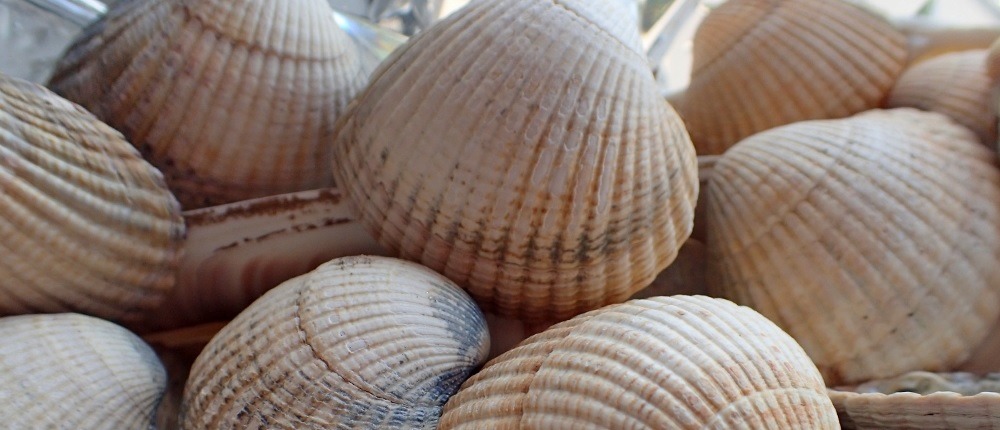
Prickly Cockle
Found in the UK and Northwestern Europe, the prickly cockle (Acanthocardia echinata) is relatively common and boasts an attractive shell which can be beige, cream or grey. The shells feature 18 to 22 spiny ridges. This creature likes to live close to the sea bottom at depths of 3 metres or more. You can find prickly cockle shells up to 75mm in diameter and they look fabulous in any display that you create.
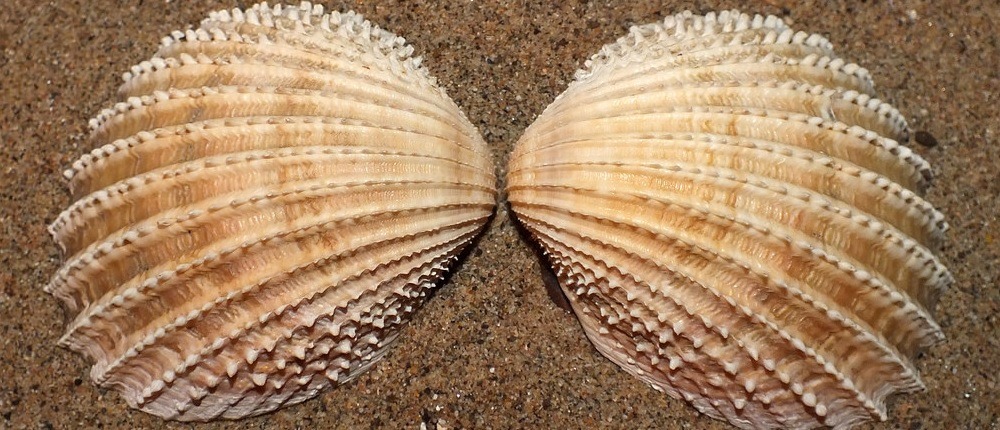
Otter Shell
The otter shell (lutaria lutaria) is a bivalve mollusc which is found off the coasts of north west Europe, all the way from Norway to the Mediterranean Sea. It inhabits soft substrates from the low tide mark down to depths of one hundred metres. The shells are common sights on the beaches of North Wales and feature beautiful colour combinations. Excellent additions to your collection, otter shells are truly eye-catching.
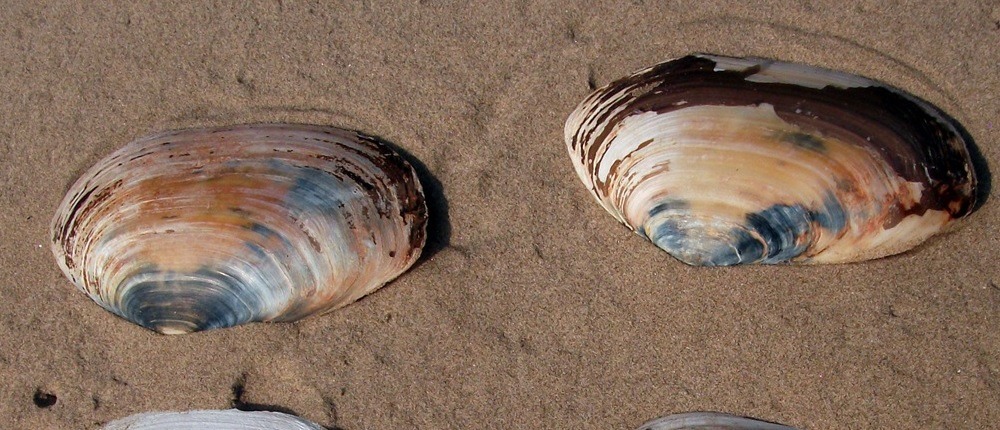
Iceland Cyprina
A species of edible clam, the Iceland cyprina (Arctica islandica) is notable for its exceptional longevity. A specimen called Ming the clam was reported to have lived 507 years! Native to the North Atlantic, this bivalve mollusc is harvested commercially for food and lives below the tide line. It is also known as the mahogany clam, mahogany quahog and black clam. The shells are common on the beaches of North Wales.
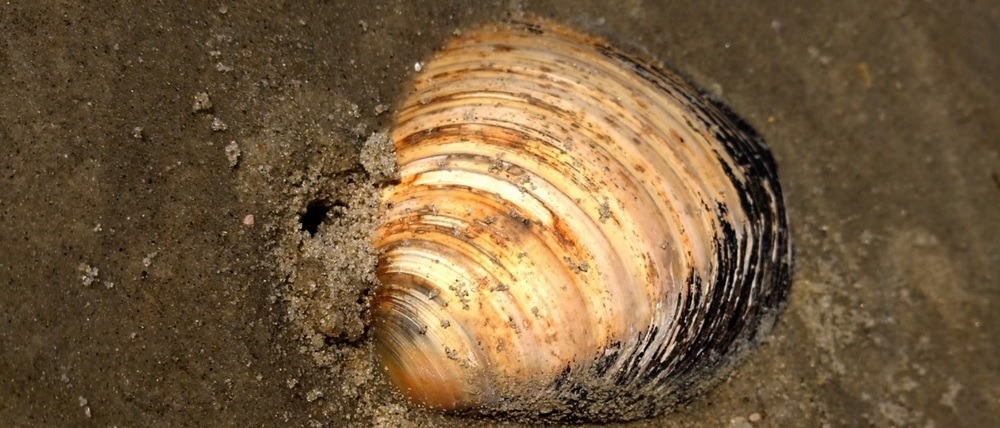
Sand Gaper
The sand gaper (Mya arenaria) is a species of clam which lives buried in tidal mudflats. It can be found in both the western and eastern Atlantic, the North Sea and the Mediterranean. It has become an invasive species on the Pacific coast of North America which is ironically where it originated in the Miocene period. As well as being eaten by people, this species is relished by sea otters and seagulls.
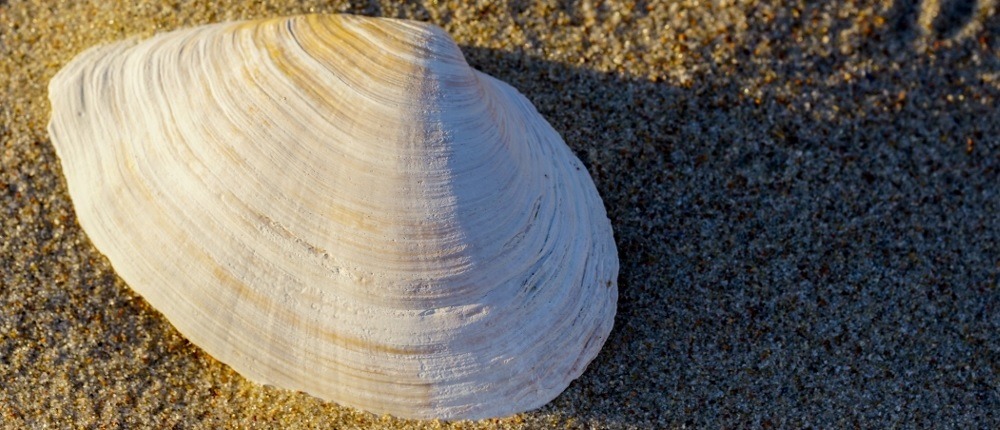
Bean Tellin
The bean tellin (Tellina fabula) is a marine bivalve mollusc. It is found in profusion off the coasts of north west Europe where it lives buried in sandy sediments at a depth of up to 40 metres. Indeed, this creature can be found in densities of over 1000 individuals per square metre. Little wonder that the shells are common sites on our beaches! They are asymmetric, brittle and up to 2cm across.
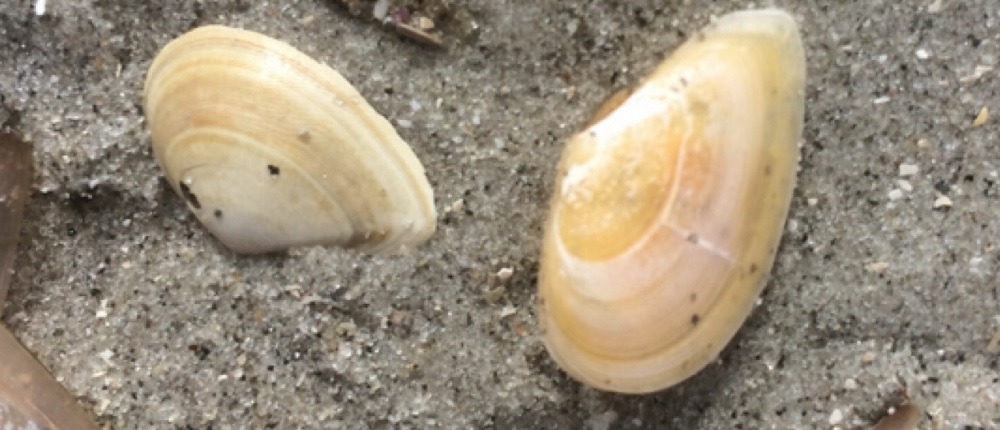
Common Whelk
The common whelk (Buccinum undatum) is an edible sea snail. Whelks are carnivorous creatures which feed on worms, crustaceans and molluscs. They reach their prey by drilling holes through their shells to reach the edible tissue. Common whelk shells are commonly seen on Welsh beaches and can measure up to 10cm in length. Unfortunately, it is hard to find unbroken helical (spiral) shells.
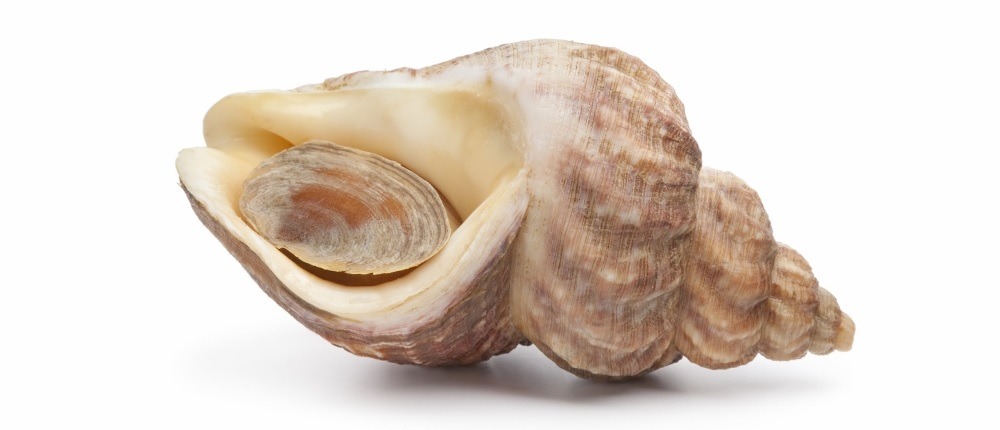
Tower Shell
The common tower (Turritella communis) is a small species of sea snail. Found in the eastern Atlantic but not in the English Channel, it lives at depths of up to 200m and burrows into gravelly mud. The shell features 16-29 whorls and grows to a length of 3cm. Common tower shells can often be found at Black Rock Sands but I haven’t seen them on any of the other beaches in the region. That doesn’t mean they aren’t there!
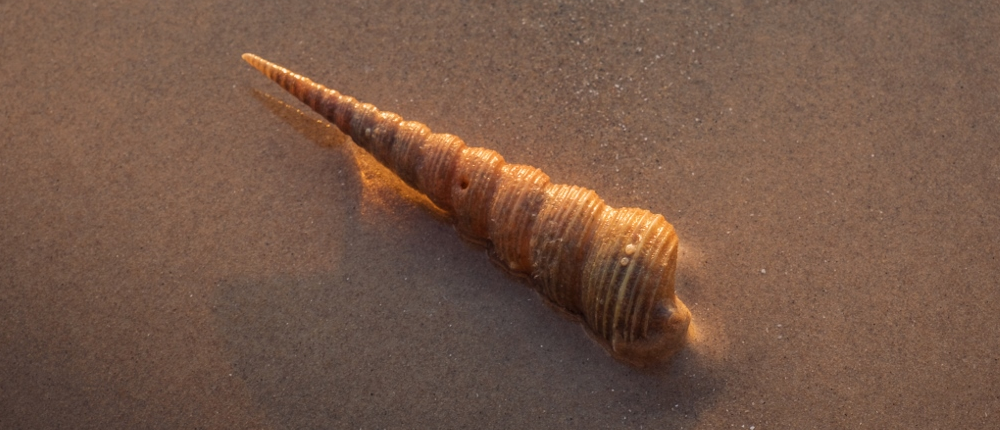
Large Necklace Shell
The large necklace shell is that of a predatory sea snail (Euspira catena) which is found around the coasts of northwest Europe. The snails live buried in sand and gravel from close to the shore to depths of 125 metres. They feed on molluscs by penetrating their shells with their proboscis and suckling out their meals. The shells can be found on many of the beaches in North Wales including Llanddwyn and Newborough.
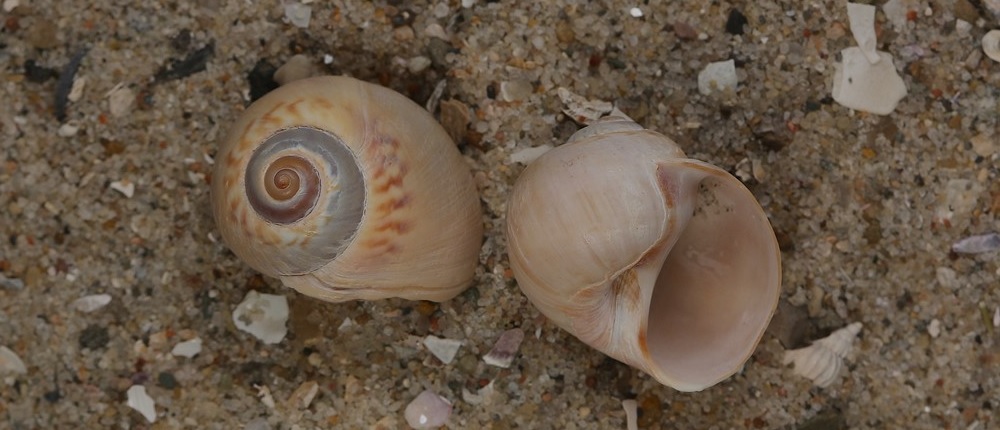
Red Whelk
The Red Whelk or Buckie (Neptunea antiqua) is a marine snail that can grow to a length of 20cm but most are much smaller. Their shells are white to orangey white in colour and feature 6 to 8 whorls. These whelks are found in the Northeast Atlantic along cold to temperate European coasts from he low water mark to a depth of 1,200 m. They are scavengers and so do not seek out living creatures as food.
